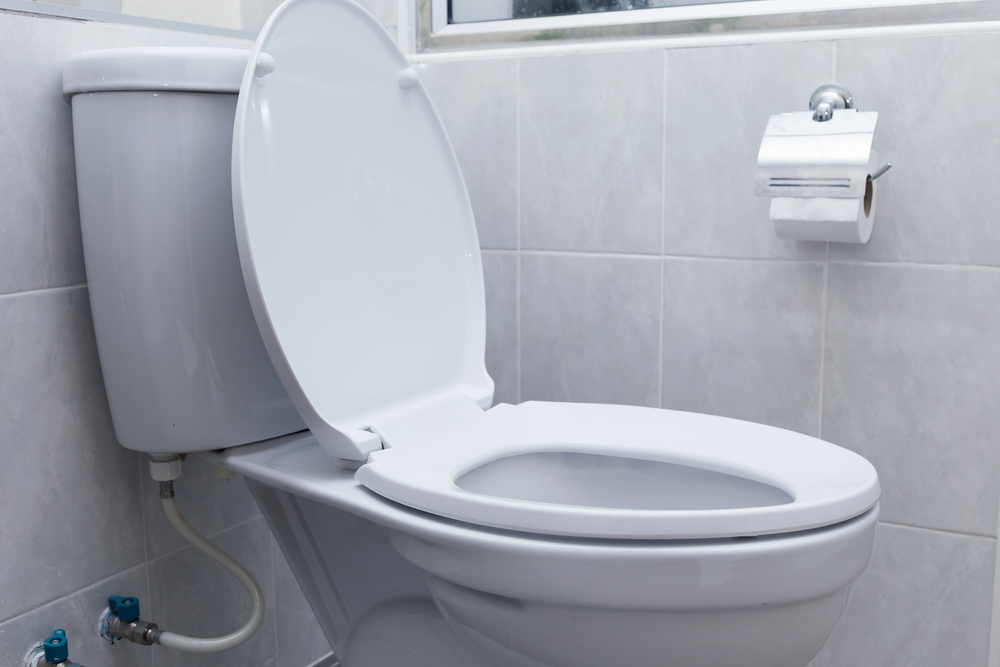 Most of us like to flush it and forget it, but pooping is an essential bodily function that is vital to your health. It is your body’s way of expelling waste that it doesn’t need. This is why the look and smell of your stool can provide clues as to what’s going on inside your body. The texture, shape, size, smell and color of your stool can hint at things like dehydration, diseases, deficiencies in your diet and even stress, so the next time you do the doo, see what your poop is trying to tell you. Here’s what to look for:
Most of us like to flush it and forget it, but pooping is an essential bodily function that is vital to your health. It is your body’s way of expelling waste that it doesn’t need. This is why the look and smell of your stool can provide clues as to what’s going on inside your body. The texture, shape, size, smell and color of your stool can hint at things like dehydration, diseases, deficiencies in your diet and even stress, so the next time you do the doo, see what your poop is trying to tell you. Here’s what to look for:
Texture and Shape of Your Stool
- Hard, Dry and Lumpy – It is likely that you’re lacking fiber and are dehydrated. Try drinking more water and adding more fruits and veggies into your diet.
- Soft, Fluffy Blobs – Having a mushy stool is on the edge of normal, but it could also mean you’re on the verge of transitioning to diarrhea.
- Liquid, No Solid Pieces – This is diarrhea, most commonly caused by some sort of infection. Diarrhea is your body’s way of cleaning out that infection. Make sure you drink lots of water to replace the liquids you lose, otherwise you might become dehydrated.
- Pencil Thin – A mass in the colon could be constricting the stool and may be an indicator of colon cancer or polyps.
- Floating and Stinky – this could indicate the presence of too much oil in your stool. Your body may not be absorbing fats properly. Diseases like chronic pancreatitis may be the cause.
- Non-existent – If you’re not going, you’re constipated. Try drinking more water and increasing you fiber intake.
- Long Torpedo-shaped, Smooth and Soft – This is the optimal, healthy poop.
Color of Your Stool
- Brown – Poop is naturally brown due to the bile produced in your liver. A brown poop is a healthy poop.
- Green – Food may be moving through your large intestine too quickly, or you could have eaten a lot of green leafy vegetables, or green food coloring.
- Yellow – Greasy, foul-smelling yellow poop indicates excess fat which could be the result of a malabsorption disorder such as celiac disease.
- Black – This could mean that you are bleeding internally from an ulcer or cancer. Some iron supplements may also cause black stool.
- Light-colored, White– This could mean you have a bile duct obstruction. Some medications may also cause this.
- Blood-stained or Red – You may have eaten a lot of red foods, such as beets which can turn your stool red. However, blood in your stool could be a sign of polyps or colorectal cancer. Blood in your stool can also be the result of benign conditions like hemorrhoids and anal fissures. Contact your doctor if you see blood in your stool.
“Everyone’s bowel habits are different so there is a very wide variety of ‘normal,’” said Robert Giacobbe, DO, of Mather Primary Care. “One of the most important warning signs is change. If there is any change in the size, thickness, frequency or color of your stool, talk to your doctor. Also, any unexplained weight loss or new bloating, cramping or abdominal pain should prompt a visit to your doctor. Finally, blood is always abnormal. Although bleeding can be caused by something benign, you should always call your doctor if you see blood in your stool.” Giacobbe said.
In addition, some medications can cause constipation or changes in frequency of bowel movements, so always be aware of the side effects of the medications you are taking. If you experience any big, noticeable changes that last, you should see your doctor. Furthermore, our bodies react to stress differently and some of those reactions may manifest in the bathroom. If your bowel movements have changed drastically and other medical conditions have been ruled out by your doctor, stress may be the culprit. Pay attention to what your bowels are telling you. From stress to medical conditions, they provide you with warning signs that will help you improve your overall health.

